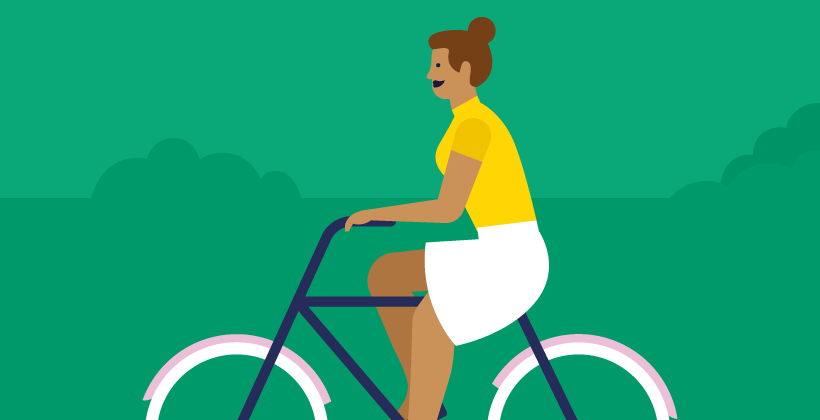Physical Activity and Barriers to Participation in Children
Last Updated : 12 November 2012Physical activity is beneficial for both physical and mental health. Despite opportunities both at and outside of school, many adolescents are not participating in regular physical activity. Some of the reasons for a lack of physical activity by adolescents are outlined in this article.
Current recommendations
European recommendations state that children and adolescents aged 5–18 years should accumulate at least 60 minutes of moderate to vigorous physical activity daily most days of the week (activity that noticeably increases the heart rate and breathing rate).1 However, the HELENA (Healthy Lifestyle in Europe by Nutrition in Adolescence) study of 12.5–17.5 year-olds reported that under one-third of European girls and under two-thirds of boys achieve this.2 In general, female adolescents participate in less physical activity than males, with a greater decline in participation for girls as they age.2,3 Numerous factors that inhibit girls’ participation in physical activity have been cited.3,4
Opportunities and barriers to physical exercise
Opportunities for adolescents to partake in physical activity exist both at, and outside of, school. However, for adolescents a number of barriers to the enjoyment of, and participation in physical activity have been identified.
At school
Physical education classes and organised sport aim to provide an opportunity to meet daily recommendations for physical activity in a fun, supportive environment. However, body image and concerns over appearance may be barriers to physical activity; many girls note that getting ‘sweaty’ and messed-up hair and makeup limit their willingness to participate. Adolescents are also concerned with stereotypes (sporty females perceived as more masculine), bullying or teasing from their peers, and may lack sporting role models. A lack of confidence in their own ability and skill level can also inhibit participation and enjoyment.3-6
Outside of school
Activities outside of school include organised sport, active hobbies and family interaction. As the popularity of sedentary behaviours, such as watching television, using the internet and video games increases, adolescents may spend more time on them, as opposed to physical activity.2,4,6 Other time constraints include homework or part-time work. Adolescents’ access to physical activities may be limited by family structure and routine, parents’ safety concerns, lack of support or inability to provide for travel, equipment purchases and club membership fees.3,4,7
Enhancing enjoyment and participation
As the benefits of physical activity are clear, and attitudes are shaped early on, it is imperative that individuals are encouraged to take part in, and enjoy, physical activity from a young age. The numerous reasons that inhibit participation must be addressed, for example discussing with adolescents their attitudes towards sports clothing, body issues, stereotypes, and factors which would increase their participation and enjoyment.3 This may include revising school uniform codes and the option to shower and dress in private.5,6
Schools appear best placed to effect change. It has been recommended that physical education and sports in schools should focus more on promoting the confidence and wellbeing of each individual, in addition to fitness and competitive sport.3 Physical education should be inclusive and staff should be supportive of all pupils, regardless of ability. It is important to provide adolescents with opportunities to partake in novel activities that they enjoy, and inexpensive activities that do not require specific skills or transportation. Adolescents could be motivated by developing skills in leadership, team work and organisation, a positive body image, and improving academic performance. Girls are more likely to be motivated by social and health benefits, whereas boys are more likely to be motivated by being part of a team. Girls’ enjoyment of physical activity may be enhanced by participation with friends and in a girls-only environment partly due to body image concerns. Adolescents should be made aware of their physical activity levels e.g. by self-monitoring with a step counter. Active transport to and from school should be encouraged.3,6,7
At home, families have a big influence on the activity levels of children, but this influence declines as children grow older. While adolescents may be increasingly influenced by their peers, families can also act as role models by being active themselves.3,8
References
- World Health Organization website, Physical activity and young people.
- Ruiz JR, et al. (2011). Objectively measured physical activity and sedentary time in European adolescents: the HELENA study. American Journal of Epidemiology 174(2):173–184.
- Women’s Sport and Fitness Foundation (2012). Changing the game for girls. London: United Kingdom.
- Dwyer JJM, et al. (2006). Adolescent girls’ perceived barriers to participation in physical activity. Adolescence 41:75–89.
- Stankov I, et al. (2012). Overweight and obese adolescents: what turns them off physical activity? International Journal of Behavioral Nutrition and Physical Activity 9:53.
- O’Dea JA (2003). Why do kids eat healthful food? Perceived benefits of and barriers to healthful eating and physical activity among children and adolescents. Journal of American Dietetic Association 103:497–501.
- De Cocker K, et al. (2012). Can differences in physical activity by socio-economic status in European adolescents be explained by differences in psychosocial correlates? A mediation analysis within the HELENA (Healthy Lifestyle in Europe by Nutrition in Adolescence) Study. Public Health Nutr 12:1–10; doi:10.1017/S1368980012001036.
- Fitzgerald A, et al. (2012). Do peers matter? A review of peer and/or friends’ influence on physical activity among American adolescents. Journal of Adolescence 35(4):941–958.



